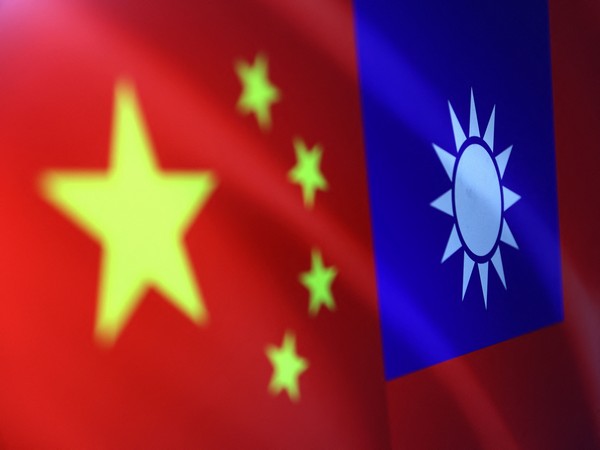Taipei [Taiwan], January 8 (ANI): Taiwan is investigating whether a cargo vessel linked to China was responsible for damaging an undersea cable that serves as a critical internet link for the island, the New York Times reported.
The Taiwanese Coast Guard revealed that seven Chinese nationals were aboard the ship, which is suspected of causing damage to the Trans-Pacific Express Cable. This incident underscores Taiwan’s vulnerability to potential disruptions in its critical infrastructure, especially as tensions with China continue to rise.
The damaged cable, which also connects to South Korea, Japan, China, and the United States, is one of more than a dozen fibre-optic cables that help maintain Taiwan’s connectivity.
Chunghwa Telecom, Taiwan’s primary telecommunications provider, reported receiving a notification about the cable damage on Friday morning. Although communications were swiftly rerouted, preventing significant outages, the incident has raised concerns about the security of these fragile links, which are prone to breakage due to increased maritime activity around Taiwan.
Later that day, the Taiwan Coast Guard intercepted a cargo vessel near the northern port city of Keelung, close to where several undersea cables make landfall. According to the Taiwan Coast Guard Administration, the vessel was owned by a Hong Kong company and registered under flags from both Cameroon and Tanzania. “The possibility of a Chinese flag-of-convenience ship engaging in gray zone harassment cannot be ruled out,” the Coast Guard Administration stated.
Experts say that while it is difficult to determine whether such damage is deliberate, it aligns with broader tactics of intimidation by China aimed at undermining Taiwan’s defences. “Such harassment has been a defining marker of Chinese coercion against Taiwan for decades, but over the last couple of years has really stepped up,” noted Gregory Poling, director of the Asia Maritime Transparency Initiative at the Centre for Strategic and International Studies.
Taiwanese authorities have described this form of harassment as a gray zone tactic designed to disrupt without escalating into direct conflict. Yisuo Tzeng, a researcher at the Institute for National Defence and Security Research, explained that these actions could desensitise Taiwan over time. “That puts Taiwan at risk of being caught off guard in the event of a real conflict,” Tzeng said.
The suspected cargo vessel, identified as “Shun Xing 39” by the Taiwan Coast Guard, appears to have used two sets of Automatic Identification System (AIS) transponders. Ship-tracking data revealed discrepancies that suggest the ship’s real identity is “Xing Shun 39.”
According to William Conroy, a maritime analyst with Semaphore Maritime Solutions, the ship broadcast its location under the name “Shun Xing 39” at the time the cable was damaged. Shortly after the vessel was intercepted, the AIS signal under the fake name stopped, and “Xing Shun 39” began transmitting its position. “This suggests ‘Xing Shun 39’ is the ship’s real identity and ‘Shun Xing 39’ is fake,” Conroy said, as per reports by the New York Times.
The Hong Kong-based Jie Yang Trading Ltd took ownership of Xing Shun 39 in April 2024, according to vessel and corporate records. While Taiwanese authorities attempted to investigate further, rough sea conditions prevented them from boarding the ship. The Coast Guard Administration has since sought assistance from South Korea, where the vessel’s crew claimed they were headed.
This incident mirrors similar events in the past, including damage to undersea cables near Taiwan’s outlying Matsu Islands. Between 2017 and 2023, these cables suffered about 30 breaks, including two significant incidents last year that left Matsu residents with patchy internet for months.
The repeated disruptions highlight Taiwan’s need for resilient communication infrastructure. In response, Taiwan’s government has been developing a backup system involving low-Earth orbit satellites to maintain connectivity during crises. Officials have emphasized the importance of avoiding reliance on Elon Musk’s SpaceX due to its extensive business ties with China.
China’s maritime activities, including the deployment of militarised fishing vessels and coast guard ships, have intensified in recent years. Last month, nearly 90 Chinese vessels entered waters around Taiwan in the largest operation of its kind in decades. While Taiwan experiences frequent incursions by China’s People’s Liberation Army into its airspace and waters, these gray zone activities add another layer of tension to an already volatile situation.
In both Taiwan and Europe, incidents involving damage to undersea cables have become increasingly concerning. The severing of two Baltic Sea fibre-optic cables in November led to weeks-long investigations of a Chinese-flagged commercial ship in the region. Such events highlight the difficulty of verifying whether these disruptions are deliberate acts of sabotage or coincidental accidents in busy maritime regions, the New York Times reported.
“Do you deploy a Coast Guard vessel every time there is an illegal sand dredger or, in this case, a ship that is registered to a flag of convenience and has Chinese ties damages a submarine cable?” Poling asked, illustrating the challenge faced by authorities when deciding how to respond to incidents with uncertain intent. (ANI)
Disclaimer: This story is auto-generated from a syndicated feed of ANI; only the image & headline may have been reworked by News Services Division of World News Network Inc Ltd and Palghar News and Pune News and World News
HINDI, MARATHI, GUJARATI, TAMIL, TELUGU, BENGALI, KANNADA, ORIYA, PUNJABI, URDU, MALAYALAM
For more details and packages
















